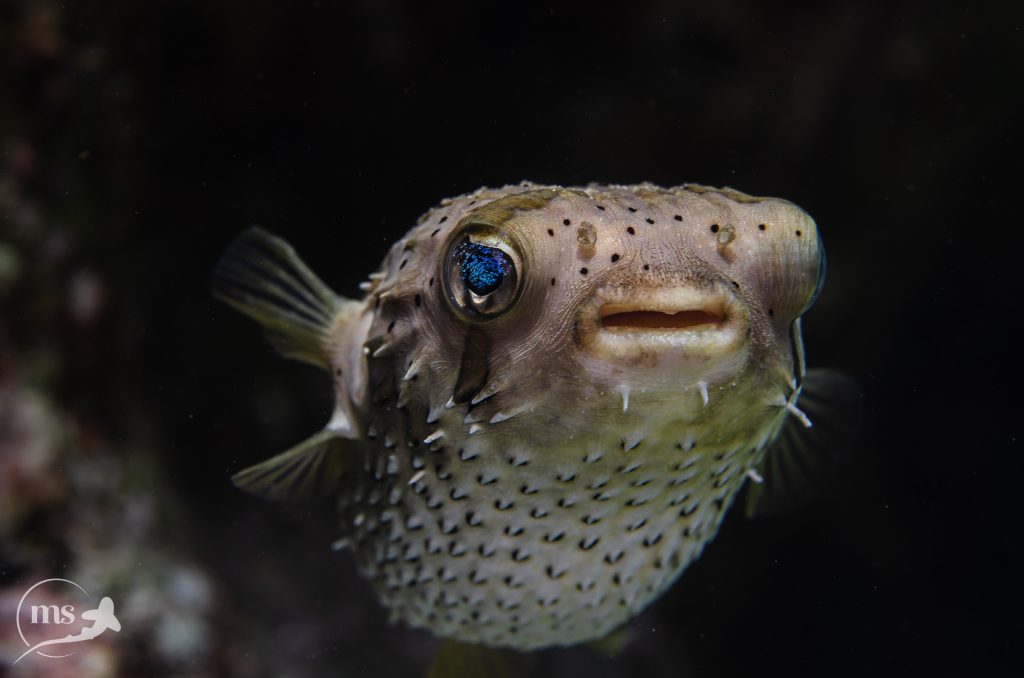
This smiley face, pokemon-looking fish is one of the porcupinefishes species we can find in our area. Called sometimes pufferfish, they are related but belong to a different family than the proper puffers. Both families are morphologically similar, but porcupine fish have spines that cover their bodies.
They are found in temperate and tropical seas worldwide, usually close to shore. If you have ever been snorkeling or even just walking on the beach in La Ventana, I am pretty sure you have seen one! They have big round eyes on the sides of their rounded head, with a wide frontal mouth typically left open. Their teeth are fused together, creating a strong, beak-like mouth capable of cracking the shells of snails, sea urchins, and hermit crabs that make their diet.
If they feel threatened, they can inflate their bodies by swallowing water, ballooning up to three times their normal size. The spines that cover their bodies radiate then outwards, giving them another defense mechanism. They only recur to this “puffing” ploy when desperate, as they lose mobility when inflated, they normally rather just hide from predators swimming into a crevice. When approached by snorkelers and divers they usually move slowly away looking for a hideout.
Some porcupinefishes are poisonous, having a substance called tetrodotoxin in their internal organs. This deadly neurotoxin is 1200 times more toxic than cyanide. As a result of all these defense mechanisms, porcupine fish don´t have many predators, but adults can be preyed upon by sharks and orcas. Sea lions and dolphins sometimes have been seen playing with an unfortunate inflated porcupine fish, as if it were a beach ball.
In some places, they are eaten as a delicacy and the South Sea islanders once used the spiked skins of porcupinefishes as helmets.